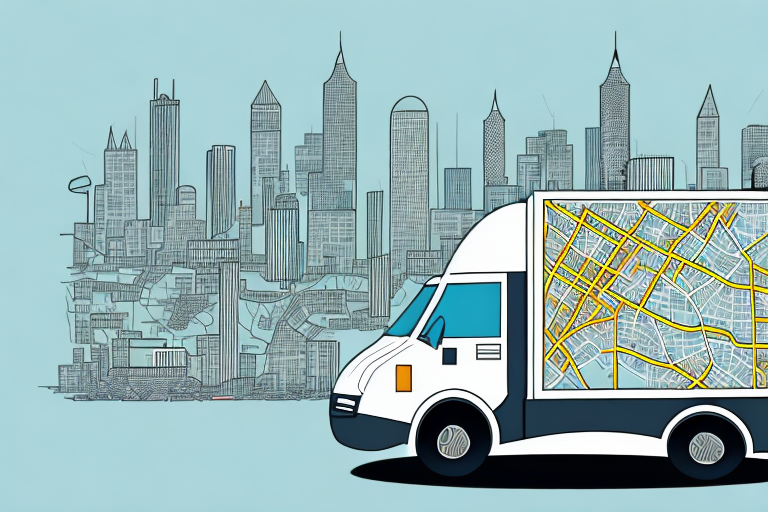Unlocking the Benefits of Transport on Demand Logistics
In recent years, transport on demand logistics has emerged as a transformative force in the transportation industry. This innovative approach leverages real-time data and advanced analytics to optimize delivery routes, reduce costs, and enhance overall efficiency. With its capability to manage complex transportation networks and provide instantaneous service, transport on demand logistics is rapidly gaining traction and is poised to become the future of transportation.
Why Transport on Demand Logistics is the Future of Transportation
The surge in e-commerce and on-demand services has heightened consumer expectations for fast and efficient delivery. Transport on demand logistics meets these demands by utilizing technology to streamline delivery routes and offer real-time tracking and communication. This not only allows businesses to satisfy customer expectations but also to minimize costs and boost operational efficiency.
Flexibility and Efficiency
Transport on demand logistics provides flexible transportation solutions that can adapt to fluctuating demands. This adaptability is crucial in today's dynamic market, enabling businesses to scale their operations seamlessly.
Environmental Impact
One of the standout advantages is the reduction of carbon emissions. Optimized delivery routes and decreased instances of empty trucks on the road contribute significantly to lowering the transportation sector's carbon footprint. According to the EPA, transportation accounts for nearly 29% of U.S. greenhouse gas emissions, making these optimizations vital for environmental sustainability.
Enhanced Safety
Real-time tracking and communication enhance the safety of transportation. Businesses can monitor the location and condition of their goods, ensuring secure and timely deliveries. This proactive approach helps prevent theft and damage, safeguarding valuable assets.
How Transport on Demand Logistics is Revolutionizing Supply Chain Management
Transport on demand logistics is redefining supply chain management by enabling businesses to optimize their transportation networks through real-time data analytics and sophisticated algorithms. This optimization translates to reduced transportation costs, improved delivery speeds, and minimized risks of delays or human errors.
Visibility and Transparency
Greater visibility throughout the supply chain allows businesses to monitor shipments in real-time. This transparency helps in quickly identifying and addressing potential issues, ensuring timely deliveries and enhancing customer satisfaction.
Sustainability in Supply Chains
By minimizing empty truck miles and optimizing routes, transport on demand logistics aids businesses in reducing their environmental impact. This aligns with the growing consumer demand for sustainable practices, as highlighted in the McKinsey Sustainability Report.
The Key Players in the Transport on Demand Logistics Industry
The transport on demand logistics industry features several prominent players that are driving innovation and transformation. Leading companies include:
These companies utilize advanced technologies to connect shippers with carriers efficiently. Additionally, smaller firms like Loadsmart, Transfix, and NEXT Trucking are making significant impacts by catering to niche markets with specialized services.
The Advantages of Adopting Transport on Demand Logistics for Your Business
Adopting transport on demand logistics offers numerous benefits for businesses:
- Cost Reduction: Optimizing transportation networks leads to significant savings.
- Increased Efficiency: Faster delivery speeds and streamlined operations enhance overall efficiency.
- Scalability: Businesses can easily scale operations up or down based on demand without substantial investments.
- Environmental Sustainability: Reduced fuel consumption and optimized routes contribute to a lower environmental footprint.
Enhanced Customer Service
Real-time tracking and efficient delivery systems improve customer satisfaction and loyalty by providing accurate delivery estimates and reliable service.
Operational Agility
The ability to adjust transportation needs swiftly allows businesses to remain competitive in a rapidly changing market landscape.
The Role of Technology in Transport on Demand Logistics
Technology is the backbone of transport on demand logistics, enabling the seamless integration of various components to optimize transportation processes.
Real-Time Data Analytics
Advanced analytics tools process vast amounts of data to optimize routes, predict demand, and improve decision-making. According to a Forbes Technology Council report, AI-driven analytics can increase efficiency by up to 30%.
Autonomous Vehicles
The development of autonomous trucks and drones is set to revolutionize the industry by reducing labor costs and enhancing delivery speeds. Companies like Tesla and NVIDIA are at the forefront of this technological advancement.
GPS Tracking and Communication
GPS technology provides precise tracking of shipments, while real-time communication systems ensure constant connectivity between all parties involved, enhancing reliability and accountability.
Overcoming the Challenges of Implementing Transport on Demand Logistics
While the benefits are substantial, implementing transport on demand logistics comes with its set of challenges:
Technology Integration
Integrating new technologies into existing infrastructure requires significant investment in hardware, software, and training. Businesses must carefully plan and execute integration strategies to ensure a smooth transition.
Regulatory Compliance
Compliance with transportation regulations and standards is essential. Navigating the complex regulatory landscape can be challenging but is necessary to avoid legal complications.
Change Management
Adopting transport on demand logistics often necessitates changes in existing processes and workflows. Effective change management strategies, including employee training and clear communication, are vital for successful implementation.
Case Studies: Successful Implementation of Transport on Demand Logistics
Several companies have successfully integrated transport on demand logistics into their operations:
Walmart
Walmart has optimized its delivery network using transport on demand logistics, resulting in reduced transportation costs and improved delivery times.
Amazon
Amazon leverages transport on demand logistics to enhance its delivery services, offering customers faster and more reliable delivery options.
Uber Freight and Flexport
Uber Freight connects shippers with carriers efficiently, while Flexport uses technology to streamline the shipping process and provide real-time shipment visibility.
Sustainability and Environmental Benefits of Transport on Demand Logistics
Transport on demand logistics significantly contributes to sustainability and environmental conservation:
Reduced Emissions
Optimized delivery routes and decreased fuel consumption lead to lower greenhouse gas emissions. The Intergovernmental Panel on Climate Change emphasizes the importance of such reductions in combating climate change.
Decreased Packaging Waste
Consolidating shipments reduces the need for excessive packaging, minimizing waste. This not only benefits the environment but also lowers packaging costs for businesses.
Adoption of Alternative Fuels
Transport on demand logistics promotes the use of electric and hybrid vehicles, which produce fewer emissions compared to traditional diesel trucks. Companies like Tesla Energy are leading the charge in providing sustainable transportation solutions.
Predictions for the Future of Transport on Demand Logistics
The future of transport on demand logistics is promising, driven by continuous technological advancements and evolving market demands:
Integration of Autonomous Technology
Autonomous vehicles and drones will play a pivotal role in enhancing delivery speeds and reducing operational costs. Innovations in this area are expected to further streamline supply chain operations.
Expansion of Market Presence
As more businesses recognize the benefits, the adoption of transport on demand logistics is expected to grow, expanding the market and fostering increased competition and innovation.
Enhanced Sustainability Efforts
With a growing emphasis on sustainability, transport on demand logistics will continue to evolve, incorporating greener practices and technologies to meet environmental goals.
In conclusion, transport on demand logistics stands at the forefront of transforming the transportation industry. Its ability to enhance efficiency, reduce costs, and promote sustainability makes it an invaluable asset for businesses aiming to thrive in a competitive and environmentally conscious market.




















